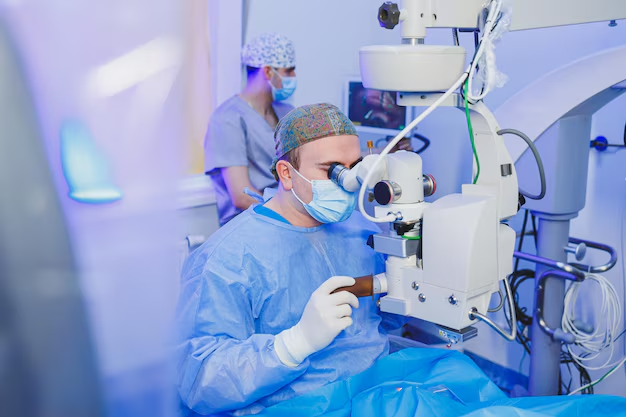Understanding Cataract Treatment: A Comprehensive Guide
Cataracts are a common eye condition, especially prevalent in older adults. They involve the clouding of the eye's natural lens, leading to a decrease in vision clarity. While cataracts can affect anyone, they are mostly age-related. Understanding your treatment options can help you make informed decisions about your eye health.
What Causes Cataracts?
Cataracts develop when proteins in the eye's lens begin to clump together, creating cloudy areas. This cloudiness obstructs light from passing through the lens effectively, which can severely impact vision. Factors contributing to cataract formation include:
- Aging: The most common cause.
- Genetic predisposition: Family history can play a role.
- Health conditions: Such as diabetes.
- Lifestyle factors: Smoking and prolonged sun exposure.
- Injury or trauma: Direct impact to the eye.
Recognizing the Symptoms
Early detection is key to managing cataracts effectively. Symptoms often develop slowly and may not be noticeable at first. Keep an eye out for:
- Blurred or cloudy vision.
- Difficulty seeing at night.
- Sensitivity to light and glare.
- Seeing "halos" around lights.
- Frequent prescription changes for glasses or contact lenses.
If you experience any of these symptoms, it's essential to consult with an eye care professional for an evaluation.
Treatment Options
Treatment for cataracts primarily involves surgical intervention. However, in the early stages, certain lifestyle adjustments can help manage the symptoms.
Lifestyle and Non-Surgical Interventions
Before considering surgery, certain changes can improve day-to-day vision:
- Enhanced Lighting: Using brighter lights in your home.
- Magnifying Lenses: For reading or other close-up work.
- Anti-Glare Sunglasses: Reducing glare from sunlight or bright lights.
- Updated Eyewear Prescriptions: Regular check-ups to ensure optimal vision correction.
While these adjustments can help alleviate symptoms temporarily, they do not treat the underlying cataract.
Cataract Surgery
Surgery is the only effective way to remove cataracts and restore clear vision. It is one of the most common and safe surgical procedures performed worldwide.
Types of Cataract Surgery
Phacoemulsification:
- Most Common Method: Involves using ultrasound waves to break up the clouded lens to be suctioned out.
- Tiny Incision: Helps in quick recovery, generally without stitches.
Extracapsular Cataract Extraction (ECCE):
- In cases where the cataract is too advanced for phacoemulsification.
- Involves a larger incision to remove the cloudy lens in one piece.
The Surgical Process
- Outpatient Procedure: Usually performed under local anesthesia.
- Duration: Typically less than an hour.
- Recovery: Most patients resume normal activities within a few days. Vision continues to improve for several weeks post-surgery.
The clouded lens is replaced with an artificial lens, known as an intraocular lens (IOL). Various types of IOLs are available, including monofocal, multifocal, and toric lenses, catering to different vision needs.
Choosing the Right Lens
Your lifestyle needs and vision goals are essential factors in selecting an IOL:
- Monofocal Lenses: Provide clear vision at one distance, commonly for distance vision, with glasses for reading.
- Multifocal Lenses: Designed to correct both near and far vision, reducing dependence on glasses.
- Toric Lenses: Specifically for patients with astigmatism.
Discuss with your ophthalmologist to choose the best IOL for your situation.
Post-Surgery Care
Caring for your eye post-surgery is crucial to ensure a smooth recovery:
- Follow Instructions: Adhere to the doctor’s guidelines on medication and eye protection.
- Avoid Strenuous Activity: Limit lifting heavy objects or vigorous exercise.
- Regular Check-ups: Monitor healing and vision improvement through scheduled visits.
Expect some mild discomfort initially, but significant improvement in vision clarity should soon follow.
Preventive Steps
Although cataracts often develop with age, certain measures can help delay or prevent their progression:
- Regular Eye Exams: Early detection can lead to better management.
- Healthy Lifestyle Choices: Balanced diet, avoid smoking and excessive alcohol consumption.
- Protect Your Eyes: Sunglasses that block UV rays and hats with brims.
Summary: Key Takeaways for Managing Cataracts
Here are a few practical tips and steps for dealing with cataracts effectively:
- 🕶️ Protect Your Eyes: Wear UV-protective sunglasses.
- 🩺 Routine Check-ups: Stay informed about your eye health.
- 👓 Update Eyewear: Regular adjustments to prescription lenses for optimal vision.
- 🚶♂️ Consider Surgery: When cataracts significantly interfere with your daily activities.
- 🤝 Consult Professionals: Discuss the variety of IOLs tailored to your needs.
Understanding your cataract treatment options empowers you to maintain or improve your vision quality. Always consult with qualified eye care specialists to navigate the best course of action for your eye health.
